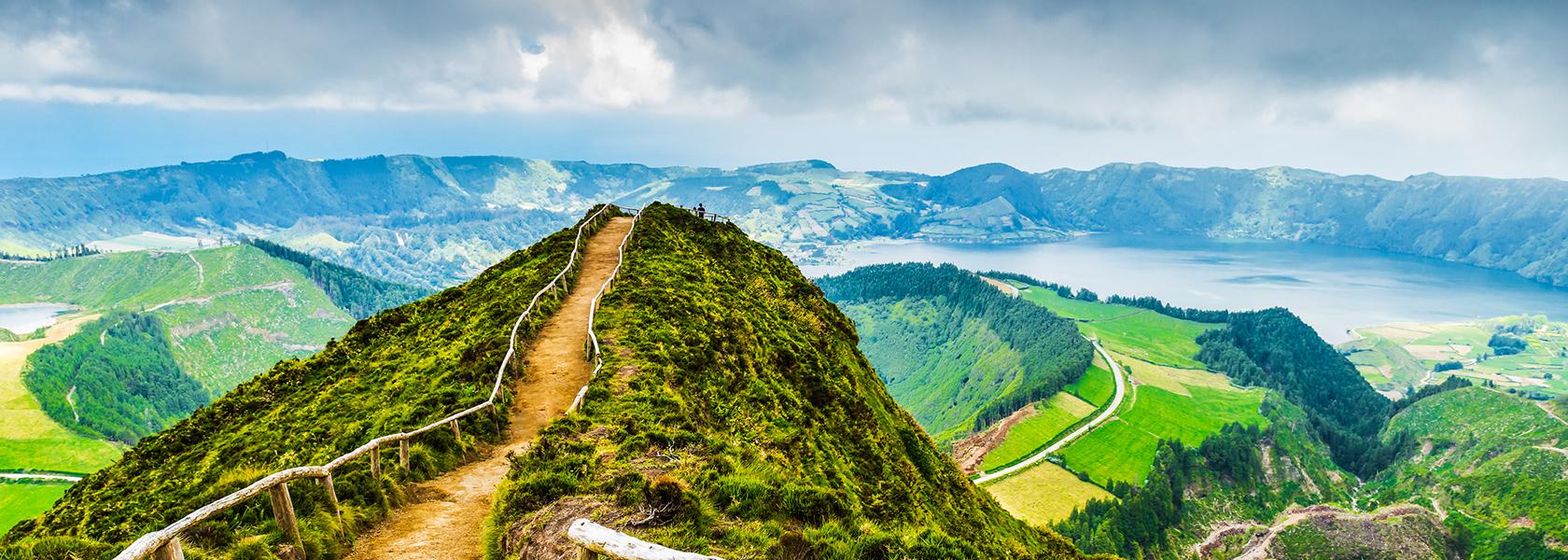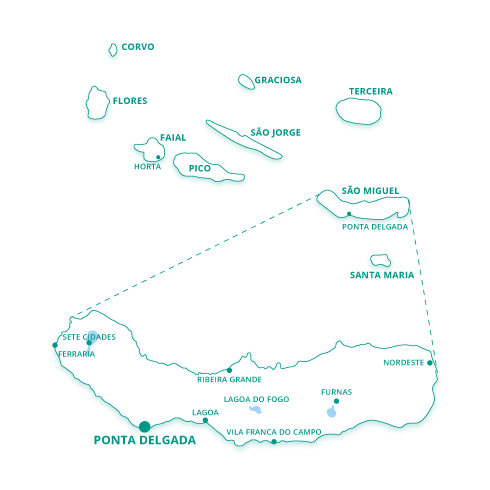Travel GuideAzores
Azores
Halfway between Lisbon and New York the sea is dotted with islands. They are submerged former mountains that reach up above the surface, bursting up with the energy of lava from the bottom of the ocean. Their peaks burst through the sea and became covered in vegetation due to the very fertile soil and the water brought by the ample rainfall. The region’s climate is maritime and profoundly temperate, with no great extremes. In addition, the Azores High or Anticyclone brings goods weather and ridging in parts of Western Europe. In winter, however, this high is pushed a little further south, meaning more rainfall for the islands, though little real cold. The archipelago’s nine islands are bunched into three groups, Western (the islands of Corvo and Flores), Central with the most islands (Faial, Graciosa, Pico, São Jorge and Terceira) and Eastern with the largest island, São Miguel, and Santa Maria.
There are a number of large patches of original vegetation, the so-called Laurissilva forest, where juniper, hibiscus, oleander, dragon trees, dwarf cedars, bay trees and other plant species are entangled. The Azores, more than an archipelago, are a botanical garden – a gallery of greens and flowers of many shades. These islands, traditionally served as an important support base for long Atlantic sea journeys. Even today they are an obligatory stop for sailing and cruise ships that ply the ocean.
The plethora of birdlife matches the diverse habitats, which range from lakes and ponds to forests, mountains and fields, with many other marine birds living on sea cliffs. In the seas around the Azores countless forms of aquatic life can be sighted, from teeming plankton to huge cetaceans: oceanic dolphins including bottlenose dolphins, blue whales, various types of cachalots or sperm whale, killer whales and tuna. Due to the islands’ relative isolation, their human inhabitants developed a sincere religiosity and folk traditions that remain very much alive and authentic today, such as the local devotion to the Espírito Santo (Holy Spirit). Various recipes, foods and snacks specific to the archipelago have also been developed – especially using the fish and shellfish that teems offshore, but also meat dishes, because the islands have much livestock, above all cattle, and also sweets such as, for example, bolo lêvedo, a bun-like sweet bread.


